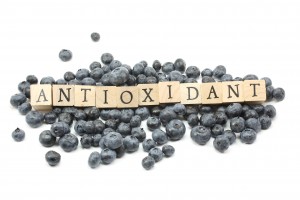Free Radical and Antioxidants for Dummies – A Very Basic Explanation
 Look at it as a bunch of cells – or molecules or atoms. There are the normal balanced cells, then there are the ones that something has happened and they have become unbalanced or contain unpaired electrons.
Look at it as a bunch of cells – or molecules or atoms. There are the normal balanced cells, then there are the ones that something has happened and they have become unbalanced or contain unpaired electrons.
Free radical is a chemistry term that describes an atomic or molecular species with unpaired electrons on an otherwise open shell configuration. (source: Wikipedia.com)
Free radicals can be formed during normal bodily functions like when cells burn food for energy or even when the body is fighting off bacteria or viruses. In normal occurrence, free radicals are not extremely dangerous.
However, when our cells are exposed to pollution, radiation, cigarette smoke, or manufactured chemicals (to name a few), it creates a larger quantity of free radicals in the body: a surplus of unbalanced cells looking to become balanced by scavenging for electrons. They will actually steal electrons from balanced cells and set off a chain reaction of damage.
If there are no electrons available, or if free radical production is in excess, damage occurs and creates an environment of oxidative stress. A perfect example of this process is the yellowing of a cut apple: apparent cellular breakdown.
Enter antioxidants
These selfless little heroes come in to save the day by donating one of their own electrons and stopping the reaction of the free radical. Antioxidants do not become free radicals themselves since they are stable in all forms and remain out of service until they are recharged or replaced. They clean up free radicals and prevent cell and tissue damage which are evident in disease and aging.
Antioxidants are available in fruit and veggie-packed diet and in supplement form.
Arm your body with the antioxidant power it needs today by eating a healthy diet and taking some powerful antioxidant supplements.


